What’s Cooking? Making The Switch To Nontoxic Cookware
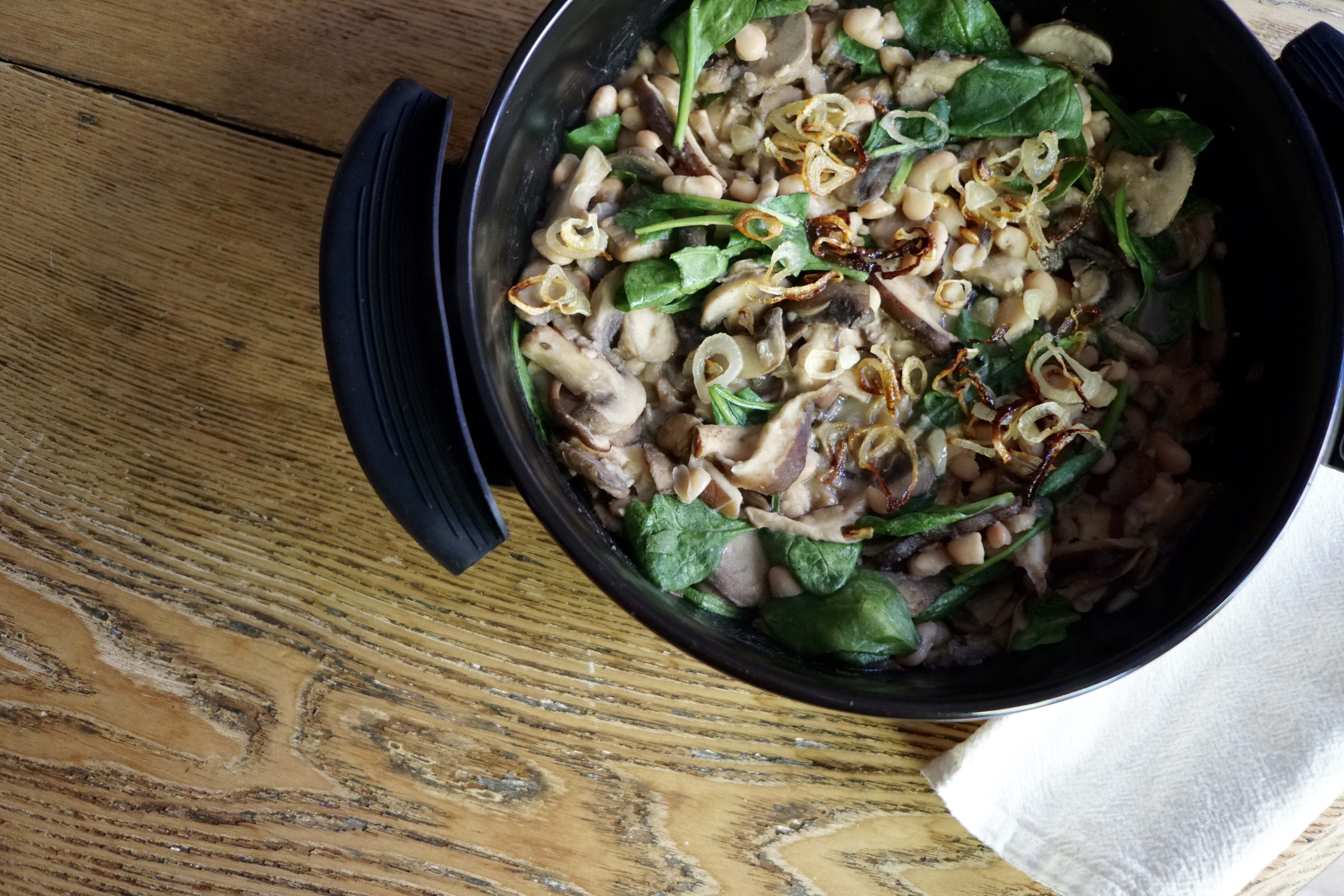
My friend Janny and I have been working on this post for well over a year. We’ve both been asked about this topic numerous times, and many of you have been told this post would be published “soon” over the last year or two. We’ve researched a lot, tested out several lines, added things to the list of safe cookware, and crossed a lot of other things off. While we could go on and on about what not to use, instead, we’re highlighting some of the cautions we take and why, along with what we’ve decided to use in our own homes. So, without further delay, here is what has come to be known between us as our Infamous Pot Post.
Listen to the podcast version of this post:


Long before I had any inkling of the existence of toxic things in my home, I visited a friend and noticed her little birdie was gone. Sadly, my friend told me that one morning the bird dropped dead just one minute after they had heated up a nonstick pan.
I knew the pan had to be emitting toxic fumes, and if you’ve heard how they used canaries in coal mines, you understand why: Long before they had ventilation systems in mines, the canaries were used as an early detection of methane or carbon monoxide build up. For hundreds of years, birds’ sensitive systems have been used as a first warning to toxic substances in the air.
If hearing about a bird dropping dead from just the fumes of a Teflon pan wasn’t enough to scare me away from using them, a little research confirmed that using Teflon and nonstick pans was linked to certain cancers and birth defects. I quickly ditched my nonstick cookware, but finding a safe replacement was quite a challenge!
BE CAUTIOUS OF THESE
Here are some reasons why you may want to double check what’s in your cookware arsenal:
- Teflon cookware
- The most toxic non-stick cookware around because the chemical PFOA has been linked to more than just bird deaths, such as cancer, thyroid disruption, and impaired fertility.
- In fact, the CDC reports PFOA was present in 95–100% of samples of people’s blood in 1999–2000 and 2003–2004 (source) and scientists at John Hopkins found PFOA in 100% of the umbilical cords they tested (source) which means the substance definitely passes through the placenta.
- Teflon manufacturer DuPont was fined over $10 million by the EPA for failures to report information to EPA about substantial risk of injury to human health or the environment (source) and settled a class action lawsuit in 2017 for $671 million for leaking PFOA from their plant in West Virginia (source).
- Our advice is to ditch any and all Teflon/PFOA non stick pans ASAP!
- Aluminum foil and cookware
- Leaches the heavy metal into food. A 2012 study showed that the use of aluminum foil for cooking contributes significantly to the daily intake of aluminum through cooked foods. The amount of leaching was found to be high in acidic solutions, and even higher with the addition of spices.
- The report continues…According to the World Health Organization (WHO), the obtained values considered to be unacceptable. Finally, excessive consumption of aluminum from leaching aluminum foil has extreme health risk effects. (source).
- Elevated dietary aluminum content has been found in the brains of persons with Alzheimer’s disease (source).
- Stainless steel cookware
- Made from a metal alloy consisting of mostly iron and chromium along with differing percentages of molybdenum, nickel, titanium, copper, and vanadium, which can leach into food and have negative effects on our health. While some brands are offering higher-grade stainless steel with lower amounts of nickel (grades 400 & above), they often still contain several heavy metals and many have aluminum cores, making them susceptible to leaching aluminum if the pan is scratched or worn. Because of that, we recommend finding high-quality stainless steel, preferably made in America (due to regulations and heavy metal concerns in other areas)
- Stainless steel leaches the highest amount of metals during the first 6-10 cooking cycles and while cooking acidic foods. If you currently use stainless steel pans, we’re not advocating for you to toss them out. Just use caution with cooking acidic foods and discard them as soon as any signs of damage or wear occur. Read more in my post about stainless steel pans.
- Made from a metal alloy consisting of mostly iron and chromium along with differing percentages of molybdenum, nickel, titanium, copper, and vanadium, which can leach into food and have negative effects on our health. While some brands are offering higher-grade stainless steel with lower amounts of nickel (grades 400 & above), they often still contain several heavy metals and many have aluminum cores, making them susceptible to leaching aluminum if the pan is scratched or worn. Because of that, we recommend finding high-quality stainless steel, preferably made in America (due to regulations and heavy metal concerns in other areas)
- Copper cookware
- The FDA warns against the use of copper with acidic foods because: High concentrations of copper are poisonous and have caused foodborne illness. When copper and copper alloy surfaces contact acidic foods, copper may be leached into the food (source).
- Copper cookware may contain nickel to help with the even distribution of heat. Many people are sensitive or allergic or nickel and it’s also known to be a pretty toxic heavy metal (source).
- Ceramic coating, enamel, and glass cookware
- may be manufactured with lead. Lead gives these wares shock resistance and color uniformity.
- Titanium cookware
- While titanium seems to pose little risk, most titanium cookware uses an aluminum base and the titanium is just a coating. With any wear and tear, the pan could leach aluminum
For more bad news, you might want to re-evaluate these household appliances:
Crockpots can contain lead in the enamel and Teflon coating. Unfortunately, crockpots are “slow cookers” which is the most efficient way for toxins to leach into our food.
Insta-Pot does not contain lead or Teflon, however, stainless steel has been shown to leach several other heavy metals, particularly when using acidic food, as noted above. Furthermore, some believe using a pressure cooker for things like bone broth, can dramatically increase the glutamine which becomes a problem when it metabolizes into glutamate once it gets past the blood-brain barrier. Many people I know use instapots, and that’s totally fine, I’ve just never felt comfortable using one.
Induction Stoves emit high levels of EMF (Electromagnetic Frequencies)
For someone who spends a great deal of time in the kitchen trying to prepare healthy, whole foods for the family, this information does not make me happy! So, what’s really nontoxic?
NONTOXIC COOKWARE: WHAT I USE
Cast Iron
- Yup, just like Grandma. This is safe for most to use on rotation and has a lot of pros.
- Cast iron can tolerate high heat It’s completely non-toxic to humans (and birds)
- Over time, the pan will become more and more nonstick with proper care (as in, cleaning with water and a pot scraper only).
- Cooking with cast iron makes food more iron-rich. (If you’re concerned about your iron levels being too high, consider having your doctor check them)
Some opt to use the more budget-friendly Lodge cast iron pans, however, they season their pans with soybean oil, with no indication that it is non-GMO or organic. I would categorize these pans as a “better choice” than enamel or non-stick, just know that your food will take on conventional soy until it is re-seasoned over time.
There are ways to strip and re-season immediately, using a self-clean oven. See the answer on this page for step by step instructions, though I would recommend using organic flaxseed oil as the best option to reseason it. I have a Lodge pan and re-seaoned it using coconut oil after I bought it, but from what I’ve read, it looks like flaxseed oil creates the most durable, nonstick finish.
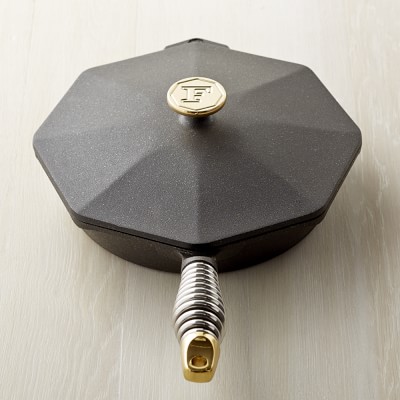
FINEX
After researching brands we’ve found what seems to be the best option. Finex, which I don’t own, but if I were to buy more cast iron cookware, this would be the brand I’d choose! These are hand-forged in Oregon and seasoned with organic flaxseed oil. They are impressive. You know you’re an adult when you drool over these types of items. Check them out here.
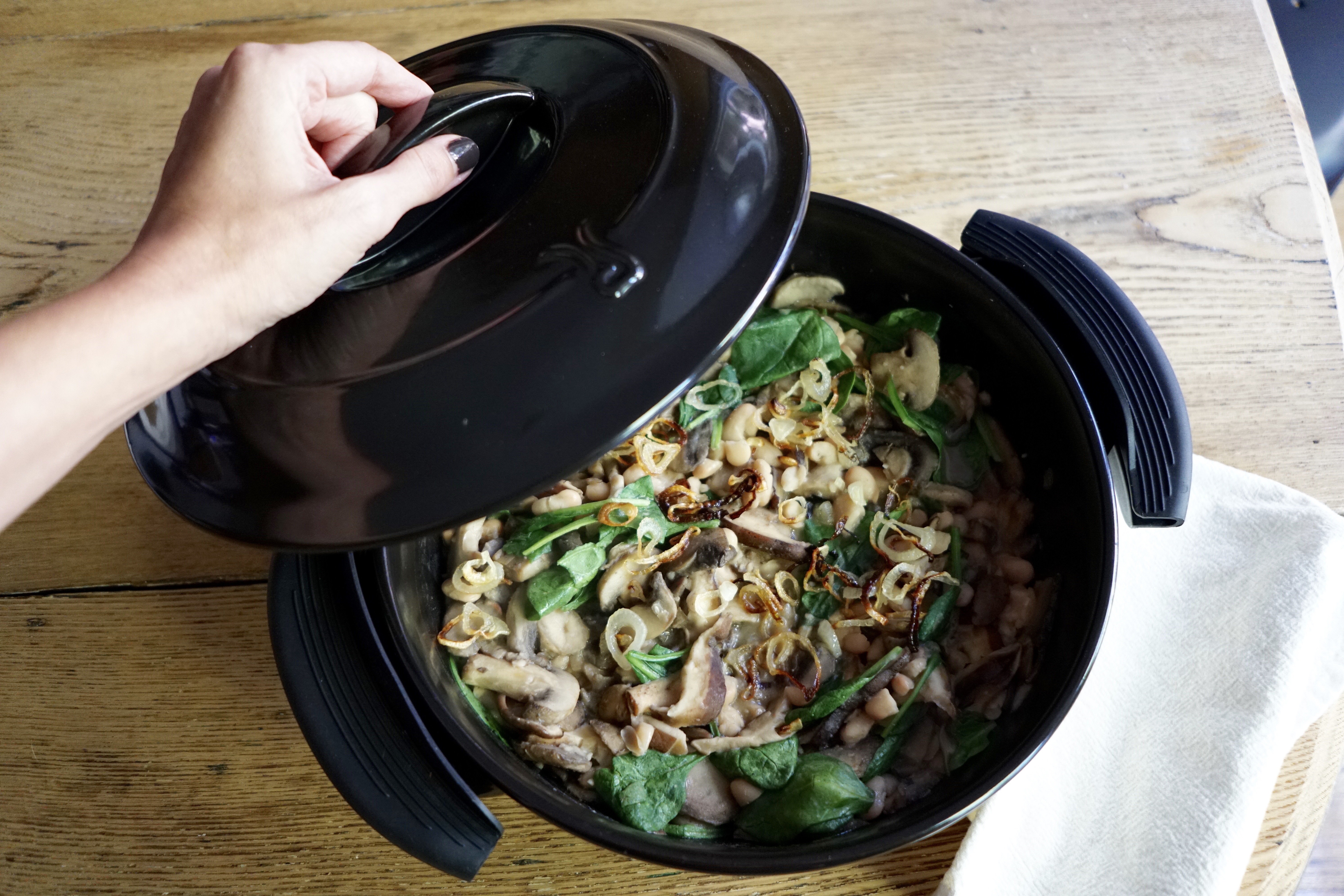
Ceramic
Nearly all ceramic pans on the market are not truly ceramic, but an aluminum or stainless steel pan base in a sol-gel coating, such as Thermalon and Greblon. These coats are sprayed on the base and baked at 200-300F. The limited toxicity results of these coatings aren’t concerning, however, keep in mind, it’s just a thin layer which may chip away and expose food to the aluminum or stainless steel underneath.
XTREMA
Xtrema is a cookware line that is 100% pure ceramic inside and out; no metal base. The cookware is glazed then fired at 2500F for 24 hours. Xtrema also seems to be the only cookware company that continuously publishes their Prop 65 test results for Lead and Cadmium. Use code MPUR10 to save some money! I recently shared my
Xtrema Cookware Review here!
I love my Versa Braiser and Janny uses these Xtrema pans on the regular:
10” Skillet, 2.5 quart Saucepan, 3.5 quart Versa Pot, & 12” Versa Braiser
Since posting this, we had a number of readers ask about lead contamination found (on the bottom of the pans) with an XRF machine. The XRF machine is designed for analyzing soil, not household appliances. Lead is naturally occurring and will be found just about everywhere, but the concern should be with whether or not the lead (or other metal) will leach. California Prop 65 and FDA laboratory procedures test for metal extraction or leaching for lead and cadmium. XTREMA’s products pass these standards. To read more click here.
Clay Pots
Why clay? Organic, unglazed clay is not only nontoxic but known to activate enzymes and minerals in food which can enhance flavoring and help digestion. Much like other slow cookers, the clay pots cook food with an even consistency, but unlike other slow cookers, they naturally alkalize foods.
“Clay [pots are] alkaline in nature and when heated, it interacts with the acid present in the food, and neutralizes the pH levels and makes it easy to digest. It also keeps the nutrients like iron, calcium, magnesium, and sulphur intact.” (Source)
Unglazed clay pots are the way to go since the benefits of cooking with clay are canceled out if there is a glaze finish sealing off the properties of the clay.
Vitaclay offers several types and sizes of unglazed clay pots in their lineup such as slow cookers, rice cookers, soup cookers, and bone broth cookers. I don’t own any yet, but I this is on my list of cookware to purchase. Janny uses their 2-quart size since it doubles as a great yogurt maker and dip warmer.
While some have voiced concern about lead contamination in clay, the reality is most lead contamination comes from the glaze. Since these are unglazed, you don’t have that issue, furthermore, the pots are fired at 1300 degrees Celsius, so even if there was lead, it would have melted away during production. All Vitaclay products are certified ‘‘Lead-free”, meet FDA, CA 65 and UL safety requirements.
You can shop all the clay pots on their site here or a few of them on Amazon.
Don’t forget
While you’re at it, you might want to extend your nontoxic cookware to include:
- Utensils:
-
- Wood Option 1, Option 2
- Silicone Option 1, Option 2, Option 3
- A note about silicone: while it seems safe for food storage and for cooking utensils that have brief contact with heat, there’s not adequate information to show it’s safe at high temperatures or with prolonged heat exposure. For now, we opt against baking with it.
- Baking Sheets. This gets tricky, as there are not a lot of good options. Here’s what we use:
- High-quality stainless steel baking sheets lined with unbleached parchment paper as a barrier. Even the best SS baking sheets we’ve found still contain some amounts of nickel, but this option is much safer than aluminum or nonstick.
- Unbleached parchment paper like this
- Cutting Board: I use organic bamboo non-toxic cutting boards similar to this and Janny uses these FSC certified boards.
- Food Storage: These glass and silicon containers, baby food containers for sauces, etc. and Stasher Bags do the job for us. We also use glass jars we’ve saved to store food.
- Cast Iron Kettle
- From Janny: It took me months to settle on this. Obviously, I wanted a non-toxic kettle, but there were stories of the glass ones shattering when being heated (not willing to risk this) and I loved that the entire top comes off and there is no hiding mold/mildew in the neck of the kettle. This is another “heirloom” investment, as I like to refer to these! While this brand offers many cast iron products with enamel, including this kettle, this particular color/selection does not.
- From Janny: It took me months to settle on this. Obviously, I wanted a non-toxic kettle, but there were stories of the glass ones shattering when being heated (not willing to risk this) and I loved that the entire top comes off and there is no hiding mold/mildew in the neck of the kettle. This is another “heirloom” investment, as I like to refer to these! While this brand offers many cast iron products with enamel, including this kettle, this particular color/selection does not.
If you’re going to the trouble of finding healthy, organic food to feed your family, why compromise the quality at the last minute, by preparing it with cookware that’s adding unhealthy things back in?
We know replacing your cookware is a HUGE expense (trust me, I still have some items I’m working on replacing and I’ve been at this for years!). A good place to start is with your most-used items and replace one or two at a time. There will likely be some killer deals coming up on cookware over the holidays and that may be a good time to stock up or even ask for them as gifts!
Be sure to check out these posts:
Are Stainless Steel Pans Safe?
*Affiliate links used. As an Amazon affiliate, I get a small commission on items purchased through these links. All opinions are 100% my own.


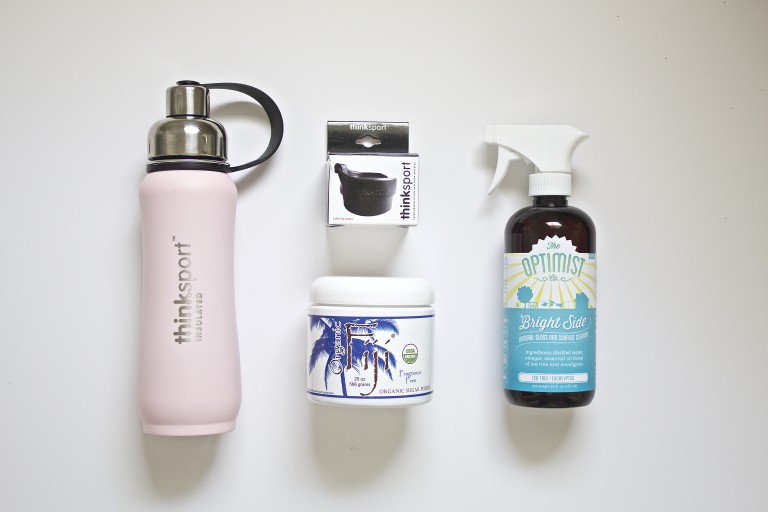
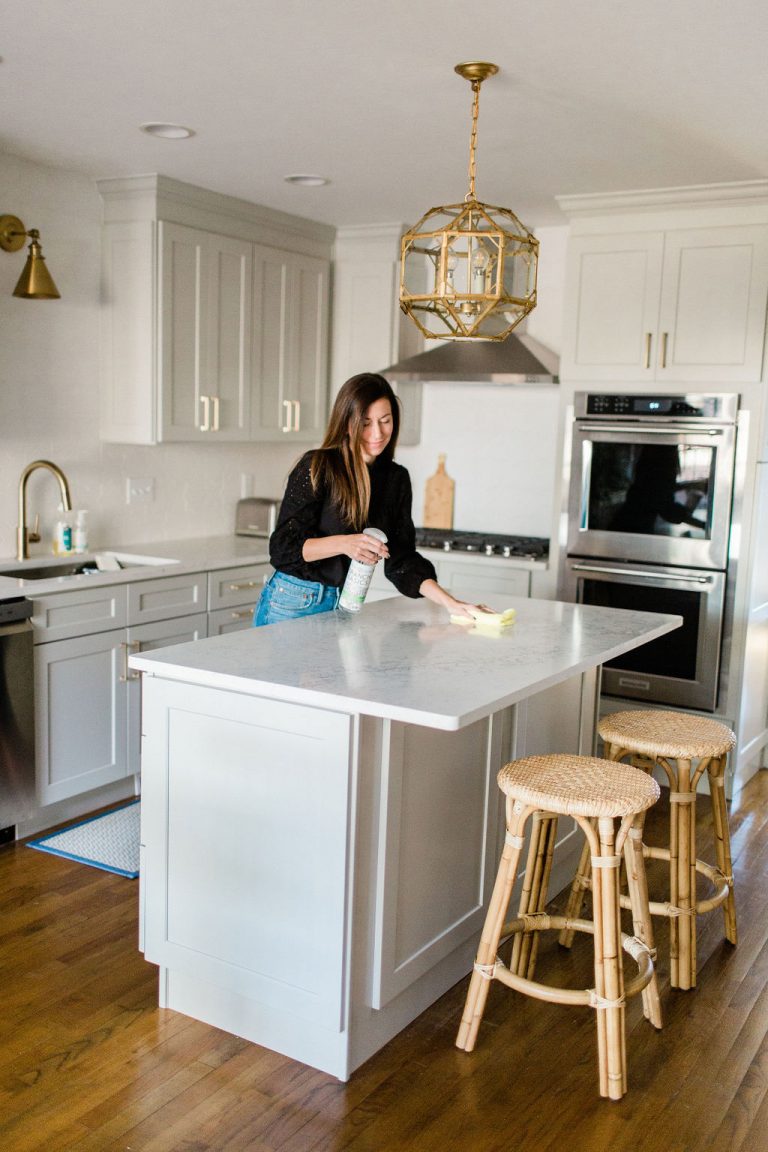
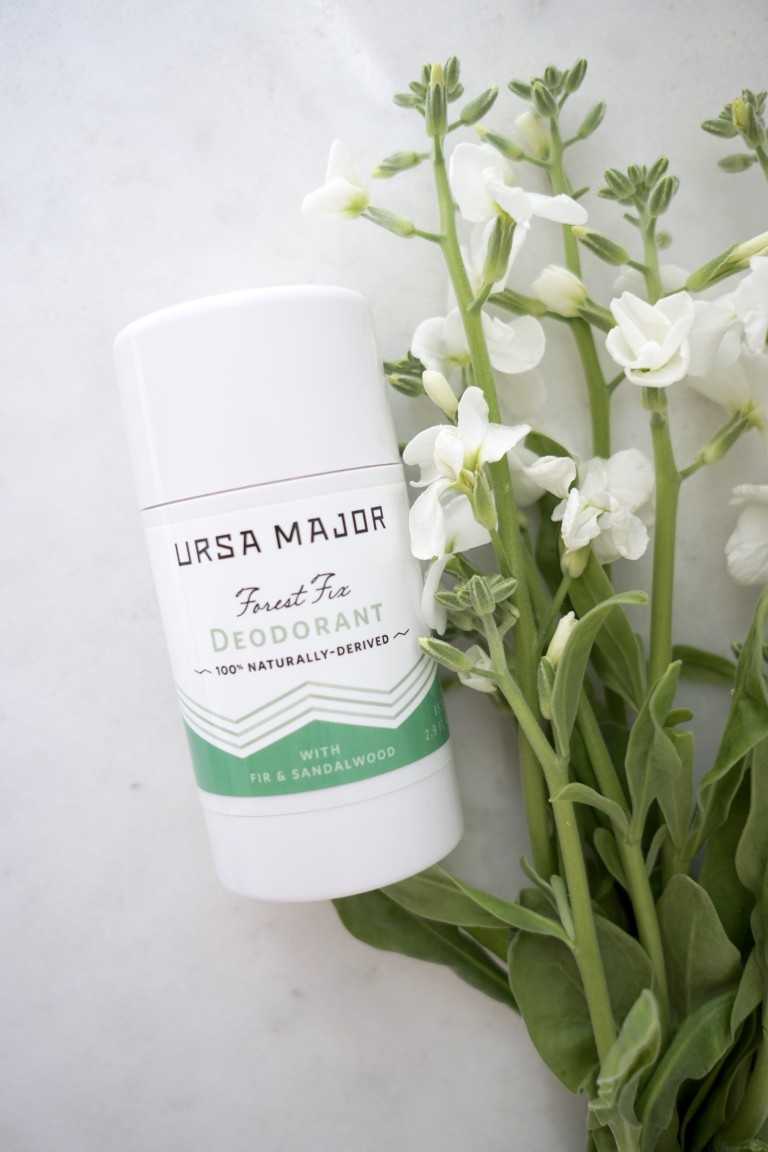
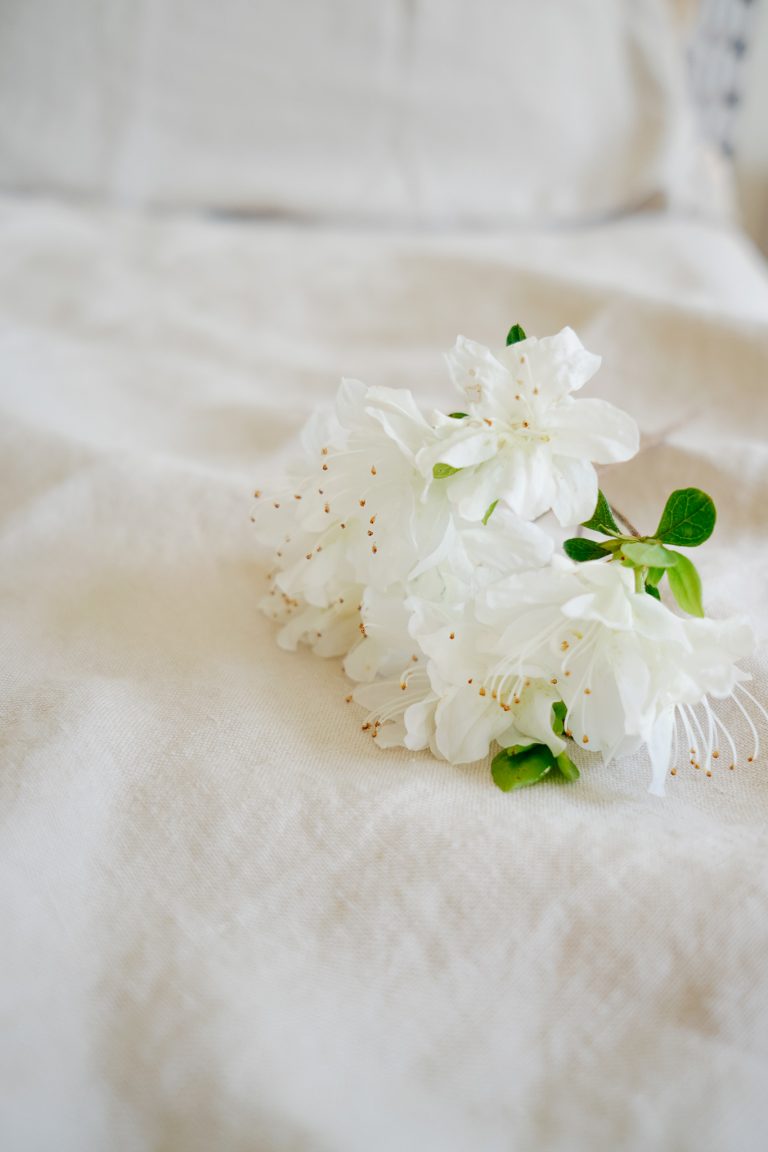
Thank y’all so much for this post. I have been coming up empty handed when trying to decide what brand of cookware to convert to.. and this has answered all my questions. Thank you!
You’re so welcome! Glad it was helpful 🙂
Do you use anything on your bamboo cutting board? The instructions said to coat it with food grade mineral oil …
Thank you for all of your super helpful suggestions!
Hi Katie! Thanks for reading 🙂
From what I’ve read, beeswax, carnuba wax and refractionated coconut oil are the best bets. I use regular coconut oil on mine and haven’t had any issues, but some are concerned with coconut oil going rancid (the refractionated won’t). I use, clean, and re-oil mine often enough that I don’t think it would be an issue.
Thank you so much for this post. I have a few very old stainless steel pots from my grandparents that say 100% stainless steel on them and am not sure what to think. Also, I have few ceramic coated MS cast iron pots as well and am not sure because you stated ceramic coating was bad. I remember reading a few years ago from Janny about replacements for Teflon and non stick but was confused about these items.
Hi Denise! Thanks for reading! I would wager that the pots from your grandparents are probably good quality stainless steel. As far as the ceramic coating on the cast iron- is it on the inside or outside? If the inside is just cast iron, you should be fine. Ceramic coatings can be really problematic because of contaminates but unless they’ve submitted the products for testing, it’s hard to say whether it would be a safe choice. That’s not a clear answer, I know, but I wish there were better standards within the industry.
Just listened to the podcast thank you for the info! What would you recommend to use to cook tomato sauce and boil pasta?
Just listened to your podcast with Lisa at Farmboone. I have the Calphon hard-anodized aluminum cookware. You did not address this type of coating. It has aluminum in the name. What are your thoughts on this type of cookware?
Hi! So happy it was helpful. Stainless steel or a reputable ceramic pot would be my top choices. Stainless steel is the most reactive the first 10 uses, especially with more acidic foods. So I wouldn’t use a brand new pot for that, however any stainless you’ve already been using and is in good shape (no scratches), would be a good bet.
I haven’t come across any studies on that particular material, but from what I’ve read about it, It’s likely more durable than traditional aluminum and would likely leach much less than traditional aluminum. It would certainly be a better choice than teflon but until I see research I wouldn’t be able to say how safe it is. If I come across some, I will update the post and let you know!
Im sorry this response is so many years later but I am wondering if you know anything about spun iron rather than cast. Does the process of how the iron pot or pan being created make it any less or more likely to cause health issues?